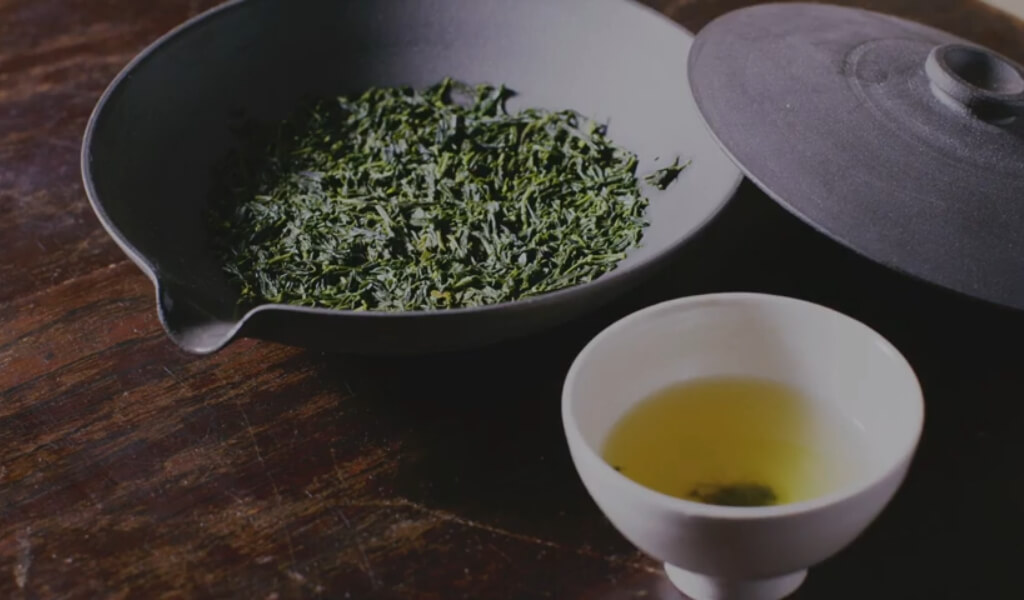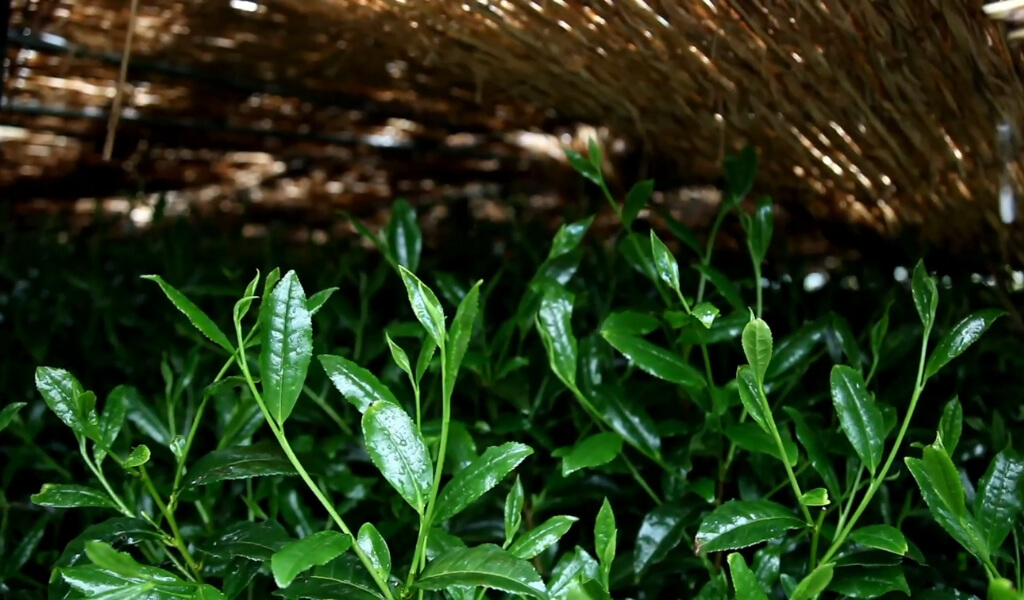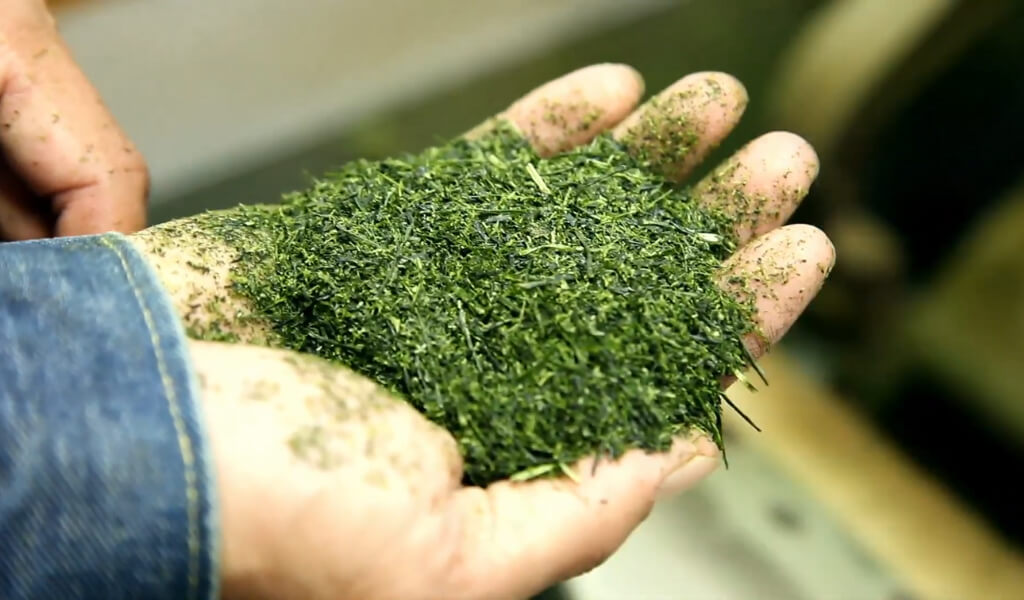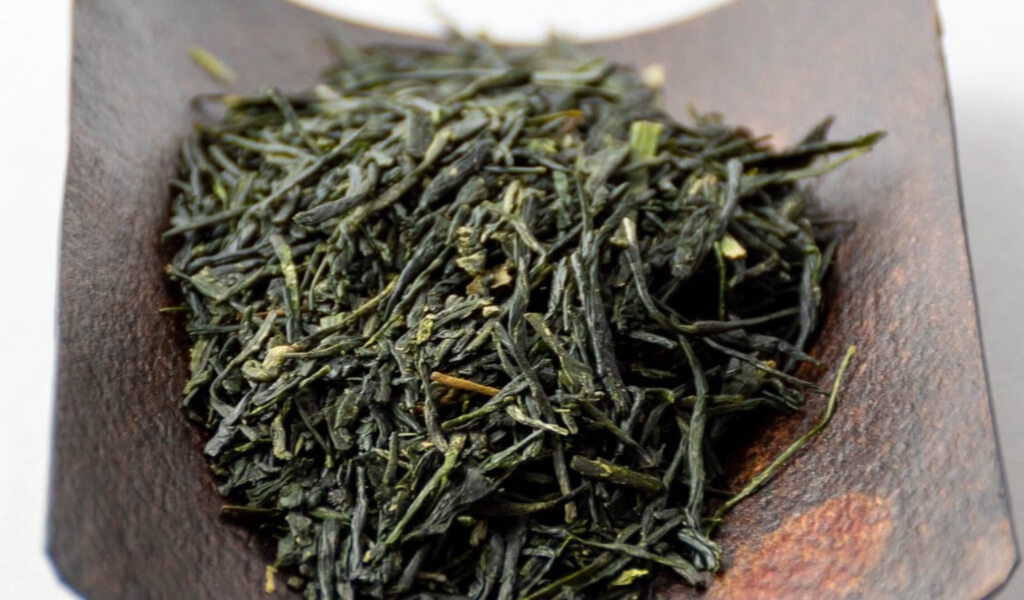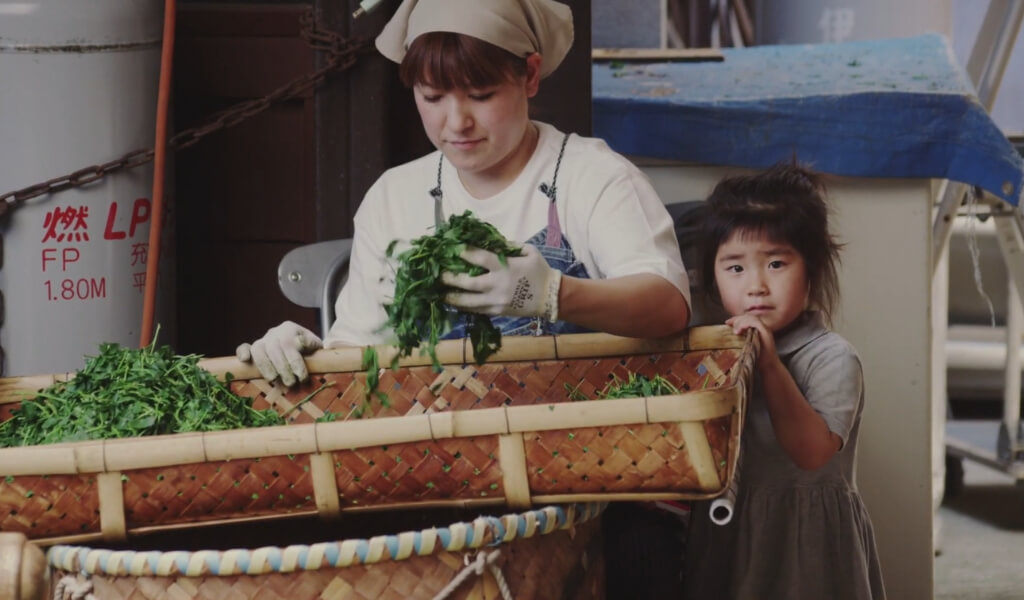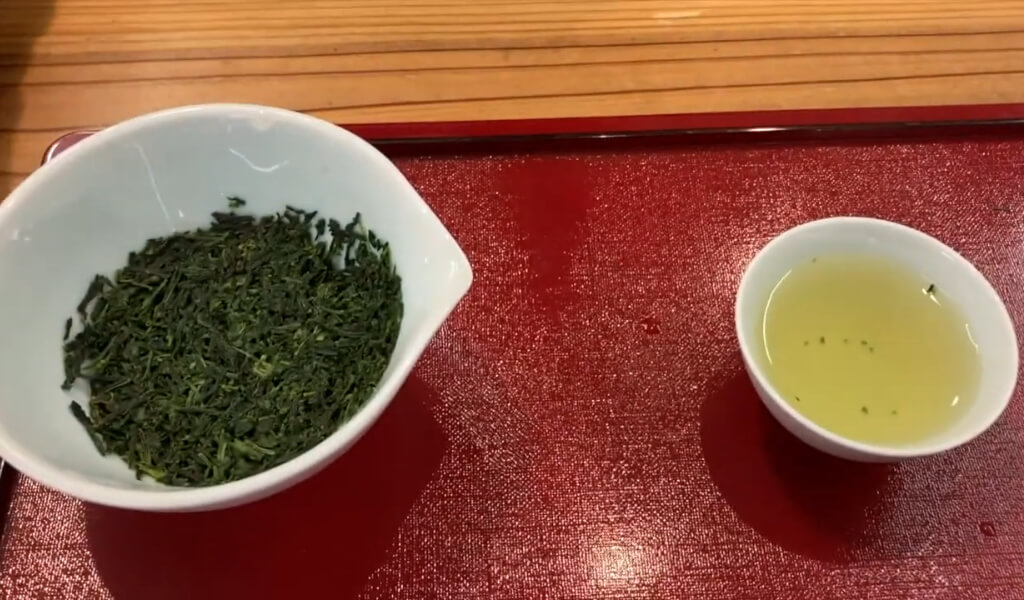If you’ve been journeying to discover the most exquisite teas worldwide, you’ve likely come across Gyokuro tea.
I was thrilled when I first tasted this unique tea from Japan; it was unlike anything else I had ever tried. The rich umami flavor, vibrant color, and delicate aroma hooked me from the first sip.
So grab a cup of your favorite brew, settle in, and join me on this journey into Gyokuro tea review below.
Quotes of tea with You
“Tea! That’s all I needed! Good cup of tea! Super-heated infusion of free-radicals and tannin, just the thing for healing the synapses.”
– Russell T. Davies
What is gyokuro tea?
Gyokuro, a special type of shaded Green tea from Japan, truly stands out. Unlike its cousin, the well-known sencha, Gyokuro is grown in the shade rather than under the full sun. This distinctive cultivation method imparts traits that are a joy to explore for any tea enthusiast.
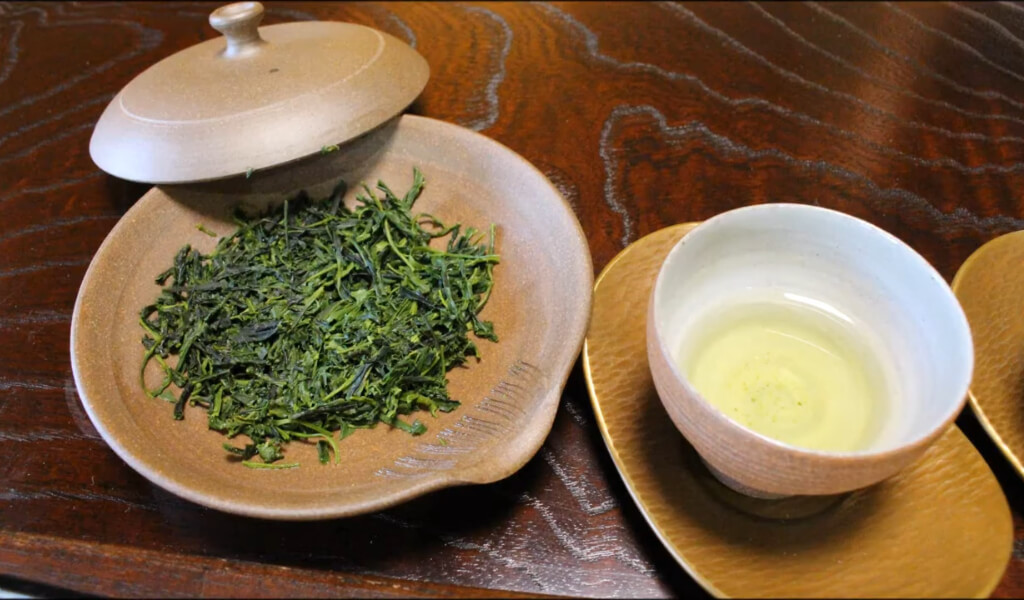
Unlike many other teas, savoring Gyokuro involves more than just gulping down a cup of hot tea. No, it’s a whole separate game. The thick, jelly-like tea fluid is slowly and in little bites enjoyed. Every sip packs a blast of potent umami flavor and a touch of a scent that is truly unique. Simply said, every tea enthusiast should try sipping Gyokuro since it offers a distinctive premium tea experience.
So, what makes Gyokuro so special? Well, it all comes down to how it’s grown. Gyokuro leaves are shielded from the sun for about 20 days before they are harvested. By inhibiting the conversion of Theanine, an amino acid found naturally in tea leaves, into Catechin, the taste of tea becomes sweeter and savory while the harshness is decreased.
Sound familiar? This method resembles how Matcha – another luxurious Japanese tea – is grown. But let me tell you, shading these leaves isn’t a piece of cake. It stunts their growth, leading to very low production volumes. That’s why your wallet might feel a bit lighter after buying Gyokuro, but trust me, it’s worth every penny.
There’s another fascinating thing about Gyokuro. Its leaves are incredibly tender and packed with nutrients. It makes them fantastic for culinary uses, providing a healthy and tasty ingredient for your cooking. Consuming them directly allows your body to absorb all those rich nutrients in these wonderful Japanese green tea Gyokuro.
The Name of Gyokuro? Gyokuro, a standout in Japanese tea names, lacks the common “cha” suffix denoting ‘tea’. Curiously, Gyokuro translates to “Ball Dew”, despite the tea leaves bearing no round shape. The origin of this name stems from the early shape of Gyokuro tea leaves, which were round.
History of Gyokuro Tea Japan
Gyokuro, known for its extraordinary characteristics, was discovered by Yamamoto Kohei VI, a legendary figure in Japanese tea history, around the early 19th century. Yes, we’ve been sipping this remarkable tea for almost 200 years!
In 1835, Kohei Yamamoto VI of the famed Yamamotoyama Tea Company began roasting tea leaves into a round form, coining the unique product “Gyokuro”.
In Japan, where tea isn’t just a beverage but a piece of their cultural fabric, Gyokuro holds a special place. Historically, it was a luxury reserved for special occasions and esteemed guests. Think of it as the champagne of tea. Gyokuro was, and still is, highly revered in traditional Japanese tea ceremonies, a cornerstone of Japanese culture that emphasizes respect, tranquility, and purity.
But have you ever wondered what the name ‘Gyokuro’ means? Translated from Japanese, it means ‘jade dew,’ reflecting the tea’s beautiful green color reminiscent of dewy jade. Seeing those vibrant leaves unfurl is just as satisfying as tasting the tea.
Gyokuro has traveled far and wide from its humble beginnings in Japan, enticing tea drinkers all over the world with its distinctive flavor profile. Today, it’s a valued item in the tea chests of connoisseurs everywhere, a monument to the remarkable green tea’s enduring appeal.
I wholeheartedly suggest Okakura Kakuzo’s “The Book Of Tea” to anybody who wants to learn more about the historical and cultural background of Gyokuro and Japanese tea. It’s a fascinating study that provides in-depth understandings of tea philosophy and how it influenced Japanese culture and aesthetics. The book provides a more thorough explanation of the significance of tea rituals, where Gyokuro frequently assumes a prominent role.
Read More:
- What is Matcha Tea? Origin, Cultivation, Tastes, & Storage
- What is Genmaicha Tea? Origins, health benefits and more
- What is Hojicha tea? Health benefits, taste like and Caffeine
- What is Bancha Tea? Ultimate Benefits Types & Brewing Tips
How is it made?
So, what’s the secret behind Gyokuro, the Rolls-Royce of green teas? The process begins with a plant called Camellia Sinensis, referred to as “Chanoki” in Japan. Here’s a tidbit: Chanoki is the birth mother of all green teas, even the crowd favorite, Sencha.
But when it comes to Gyokuro, they play by a different rulebook. Instead of using the usual Yabukita breed, known for its harmonious balance of umami and astringency, Gyokuro leans towards other breeds such as Sea Midori, Okumidori, Asahi, or Yamakai. Each breed brings unique characteristics to the Gyokuro we know and love.
Now, here’s where things get interesting. Unlike Sencha, Gyokuro gets the “shade treatment” for about 20 days before the leaves meet their destiny. This shading dance, blocking about 70%-90% of sunlight, isn’t for the faint-hearted; it requires a master’s touch. And the fun part? There is more than one way to do it. The shading technique can vary, creating an array of tastes and quality levels in your cup of Gyokuro.
The most common shading method involves erecting structures and dressing them with black sheets, or “Tana”. This labor-intensive method makes Gyokuro as rare as a blue moon. In 2004, only 222 tons of Gyokuro were produced in Japan, while Sencha hit the scales at a whopping 64,900 tons. That’s why there is a vintage and premium gyokuro tea price tag.
Gyokuro Tea Benefits
Mental Alertness and Brain Health
Gyokuro green tea, enriched with caffeine and the amino acid theanine, promotes prolonged mental alertness, significantly boosts cognitive function, and supports overall brain health.
Regarding mental clarity, Gyokuro is a step above other green teas. The secret lies in its caffeine content. Gyokuro is known for being high in caffeine, thanks to premium leaves plucked right from the top of the tea plant.
But here’s the twist – the Gyokuro tea caffeine, accompanied by the amino acid theanine, is gradually released throughout your day, unlike the caffeine rush from your morning coffee. This leads to a healthier and more prolonged caffeine experience, perfect for keeping you alert without the jitters.
Gyokuro is not just about keeping you alert but also has an edge on cognitive function. The dynamic duo of L-theanine and caffeine can significantly boost your brain performance. It’s like turning on the turbo for your brain!
Besides giving your brain function a nudge, Gyokuro also plays a role in promoting brain health. Drinking Gyokuro could help ward off neurodegenerative disorders like Alzheimer’s and Parkinson’s, thanks to the mighty catechin compound believed to affect neurons positively. So, every sip of Gyokuro isn’t just refreshing, and it’s also nurturing your brain health!
Promotes Liver Health and Aids in Hepatitis Prevention
Gyokuro tea aids liver protection, boosts the immune system, and contributes to overall health, making it a valuable component of a health-conscious lifestyle.
Indeed, the best Gyokuro tea has a potent way of stimulating the liver, safeguarding against harmful substances.
Think of it like this: every time you sip on Gyokuro, you’re arming your liver with an extra layer of protection against potential toxins, like alcohol, that can lead to hepatitis.
Gyokuro also stimulates your immune system, strengthening your body’s defenses on its own. Gyokuro’s ability to strengthen the immune system aids in reducing unneeded cellular damage, which is essential for general health.
Supports a Healthy Heart
Like its green tea siblings, Gyokuro is packed with catechins, a type of bioflavonoid scientifically linked to a lower risk of blood clots, heart attacks, strokes, and other cardiovascular issues.
But it doesn’t stop there. Green Japanese gyokuro, including our beloved Gyokuro, can serve as a natural barricade against LDL cholesterol, the so-called bad cholesterol, thereby helping maintain a healthy cholesterol balance in your body.
That’s not all; Gyokuro can act as your blood pressure regulator. Drinking unsweetened Gyokuro could help lower your blood pressure. Besides, the antioxidant-rich brew protects your body from toxins and regulates blood sugar levels.
So, with every sip of Gyokuro, you’re not just enjoying a delicious drink but also taking a step towards a healthier heart!
Keeps Your Skin Looking Clear and Youthful
With Gyokuro, that’s possible! This green tea variant is your key to clear and youthful-looking skin, thanks to the vitamin C it contains.
What can vitamin C do, you ask? Quite a lot! It works like a charm on dark spots caused by acne scars and aging. It’s like having a magic eraser that can make skin discolorations disappear.
And Vitamin C, present in your Gyokuro cup, also doubles as an anti-aging agent. It prevents wrinkles and boosts skin elasticity. So, not only can you look forward to fewer fine lines, but you can also expect firmer, more resilient skin.
Aids in Fat Burning
Gyokuro boosts metabolism, enhancing fat burn and supporting muscle building and weight loss.
This variety of green tea is rich in EGCG, an antioxidant synonymous with all types of green tea. EGCG is just the kick your metabolism needs to shift gears and start working faster.
What happens when your metabolism gets this much-needed boost? Well, your body turns into a calorie-burning machine! It starts using energy more quickly, leading to an accelerated calorie and fat burn. But remember, Gyokuro is a helper, not a magic potion. Pair your Gyokuro habit with regular exercise and a balanced diet for the best results.
The upshot? Not only will you see an uptick in muscle building, but you can also expect to lose body fat faster.
Promotes Dental Health
Gyokuro green tea contains polyphenols and minerals that improve oral health, prevent cavities and bad breath, and may protect against gum disease and gingivitis.
The skinny is that Gyokuro has a lot of polyphenols. These ingredients act as superheroes for your mouth, preventing cavities and eliminating bad breath. Additionally, Gyokuro includes fluoride and other minerals that are proven to prevent tooth decay. They protect your mouth from diseases and tooth decay like a bodyguard might.
Studies show that sipping on Gyokuro Green Tea can also safeguard your gums. It’s like a protective shield against gum disease and gingivitis. So, for a healthier smile, give Gyokuro a try.
Aids in Cancer Prevention
It’s fascinating, isn’t it, how something as simple as a cup of Gyokuro tea could contribute to cancer prevention?
The antioxidants that give Gyokuro its robust flavor profile also pack a serious health punch. They’ve been known to help prevent oral cancer and extend their protective benefits well beyond.
Here’s what science says: studies indicate that a potent antioxidant in Gyokuro known as EGCG could potentially reduce the risk of several types of cancer. This includes bladder, prostate, breast, ovary, and pancreatic cancer. These antioxidants are like your body’s internal army, tirelessly working to maintain your health defenses.
Incorporating a daily cup of Gyokuro into your routine could be an easy step towards a healthier, happier lifestyle. Plus, it’s not just about the health perks. Gyokuro, with its deep, verdant hue and complex flavors, offers a hint of sweetness that sets it apart from other green teas.
Combating Diabetes
Regular consumption of Gyokuro tea can be a part of a healthy regimen for managing diabetes.
Good blood glucose levels are vital, and Gyokuro tea can help.
This gyokuro tea enhances metabolism and positively influences mood, increasing physical and mental activity. This active lifestyle can help stave off Type 2 Diabetes. Moreover, the antioxidants in Gyokuro tea support pancreatic health, which is crucial for maintaining appropriate insulin secretion.
Gyokuro tea recipe & taste profile
What does Gyokuro green tea taste like?
Unlike most other green teas, Gyokuro’s flavor profile is an exquisite blend of sweetness, umami, and a slight touch of bitterness. Thanks to the meticulous shading process during cultivation, Gyokuro develops a deep, vibrant green color, reflecting its rich flavor and aroma. The Japan gyokuro leaves produce a savory brew with a silky texture and a wonderful sweet aftertaste.
The umami flavor is an essential characteristic of Gyokuro, contributing significantly to its unique taste profile. This savory taste, often associated with broths and cooked meats, is due to the high levels of amino acids like L-theanine resulting from the shading process. The umami flavor makes Gyokuro distinctively rich and deeply satisfying.
Pairing Gyokuro Tea with Food
Gyokuro tea is a wonderful companion to various types of food, particularly Japanese cuisine. Its rich umami flavor complements seafood dishes like sushi or sashimi. Also, it pairs well with sweet treats, as the sweetness of the food balances out the savory taste of the tea, creating a pleasant culinary experience.
Gyokuro tea caffeine
Gyokuro tea typically contains around 120-140 milligrams of caffeine per 8 oz serving, slightly higher than other green teas.
The caffeine content can vary depending on various factors, such as the tea cultivation process, the brewing temperature, and the steeping time. Despite its higher caffeine content, the amino acid L-theanine in Gyokuro ensures a slow, steady release of caffeine, providing a calm, sustained energy boost rather than a sudden jolt.
It’s an excellent choice for those seeking mental alertness without the crash often associated with other caffeine-rich beverages.
The 3 best Gyokuro Green Tea – My choice
Yamamotoyama Gyokuro Green Tea
Having enjoyed tasting this premium tea, I can attest to the delightful flavor of Yamamotoyama Gyokuro. It’s distinctively rich, with a strong umami taste, which is expected from high-quality Gyokuro. The pleasant sweetness lingering after each sip left a memorable impression on me.
Ippodo Tea’s Gyokuro
On trying Ippodo Tea’s Gyokuro, I was struck by its fine balance. It struck an intricate blend of sweet and umami flavors, revealing subtleties with every sip. The overall flavor profile was remarkable and represented the unique character of Kyoto’s renowned tea culture.
Maeda-en’s Gyokuro Green Tea
My personal experience with Maeda-en’s Gyokuro has been equally enjoyable. The tea’s vibrant green infusion is visually enticing, and the flavor doesn’t disappoint either. Its rich aroma and pronounced umami taste encapsulate an authentic Japanese tea experience.
While my experiences with these teas have been great, tastes can be subjective. It’s always best to sample different brands and find the one that resonates with your preferences.
Thanks for spiriteadrinks.com
FAQs
What makes Gyokuro tea special?
Gyokuro tea is special due to its distinctive, refined flavor profile and high-quality tea leaves. The shading process, which blocks up to 90% of sunlight, enhances the umami flavor and gives Gyokuro its sweet, rich, and complex taste.
Which Japanese tea is healthiest?
All Japanese teas have health benefits, making it hard to single out one as the healthiest. However, Matcha often gets a special mention due to its high antioxidant content as you consume the whole leaf. Gyokuro, rich in amino acids like L-theanine, is also highly beneficial. The choice ultimately depends on individual health needs and preferences.
What is the best way to brew Gyokuro tea?
It’s generally recommended to use a lower temperature of around 60°C (140°F) and steep the tea leaves for 2 minutes to extract the complex, umami-rich flavor. Overstepping or using too high a temperature can make the tea taste bitter.
Can I drink Gyokuro tea every day?
Yes, Gyokuro tea can be safely consumed every day. It is rich in antioxidants and offers numerous health benefits, including boosting mental alertness, heart health, and metabolic function. However, as it contains a relatively high level of caffeine, moderation is key, especially for those sensitive to caffeine.
How should I store Gyokuro tea to maintain its freshness?
To maintain the freshness of Gyokuro tea, it’s best to store it in an airtight, opaque container in a cool, dry place away from sunlight and strong odors. Once opened, consume it immediately to ensure optimal flavor and potency.
Is Gyokuro tea suitable for pregnant or breastfeeding women?
Gyokuro tea, due to its caffeine content, should be consumed in moderation by pregnant or breastfeeding women. While it’s generally safe in small amounts, excessive caffeine intake can lead to complications. Always consult with a healthcare professional for personalized advice.
Does Gyokuro tea have any potential side effects?
While Gyokuro tea is generally safe for most people, excessive consumption can lead to side effects associated with high caffeine intakes, such as insomnia, restlessness, or an upset stomach. Individuals with a sensitivity to caffeine should limit their consumption accordingly.
How does Gyokuro tea taste compared to Matcha or Sencha?
Gyokuro tea has a distinct flavor profile compared to Matcha and Sencha. It is known for its sweet, umami-rich taste and fuller body, while Matcha has a slightly bitter and creamy taste, and Sencha is more astringent with grassy notes.
I’m Shanna, creator of Spiritea Drinks. I’m all about teaching people to grow their own food, tea, cook what they harvest, and eat with the seasons.

